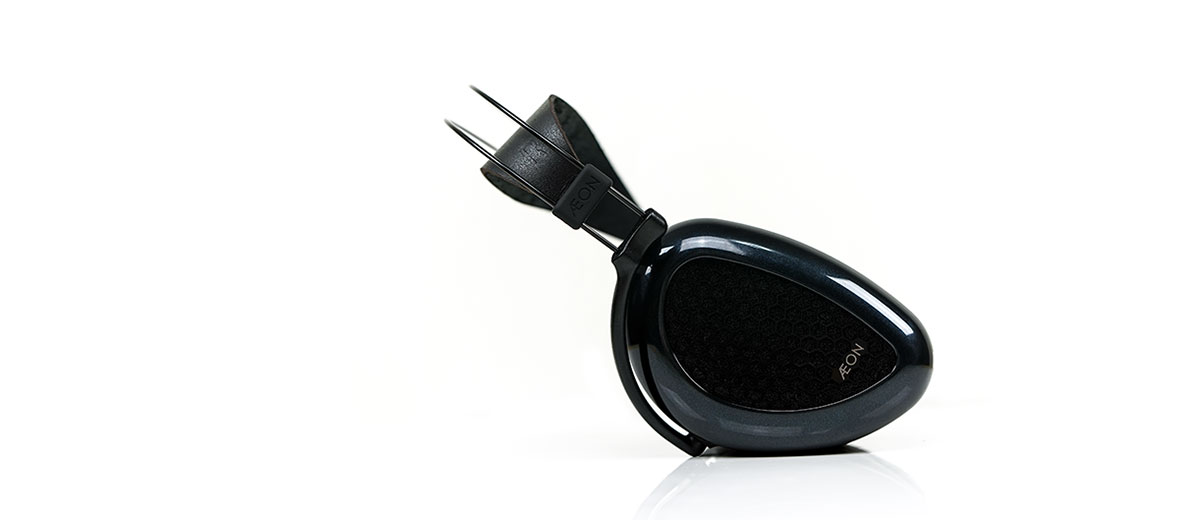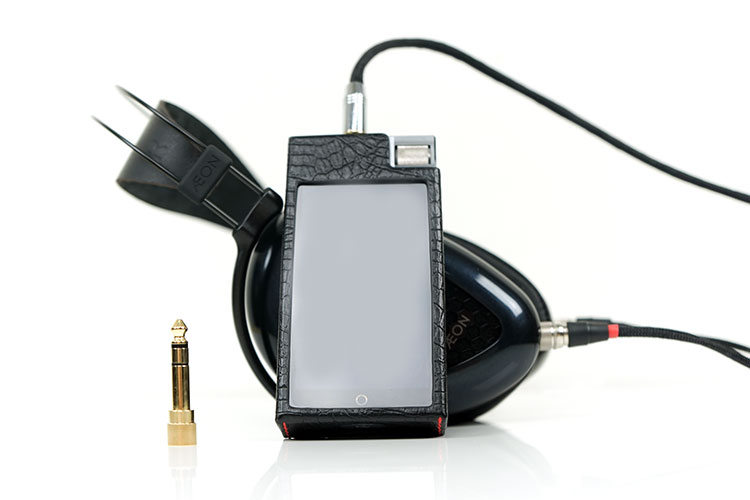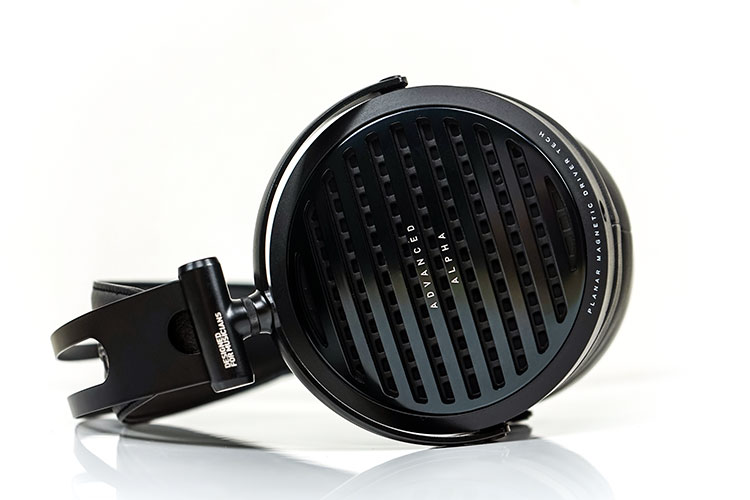Sound Impressions
Summary
This is a different sounding headphone to the closed. For those that think all they will get is a minor tweak, you will be mistaken. The AEON Flow has a warmish tonal response characterized by a mid-bass to midrange transition that has a higher degree of elevation than the closed version. The closed AEON timbre sounds a lot cooler and more neutral in its presentation as a result.
I would also describe the AEON Flow as a smoother-sounding headphone and a little more forgiving than the Closed which tends to be a little more attack-focused and aggressive sounding, particularly in the sub-bass which has a few dB more emphasis.
As a broad summary, the AEON Flow has a gentle elevation from around 60Hz onwards before a very slow almost linear-like drop to 3-4k which is where you will find that added richness and warmth to its timbre over the Closed.
The Closed AEON has more low-end emphasis but drops substantially quicker post 100Hz before peaking and dropping up to and beyond 1k. You get much less warmth and generally a cleaner presentation.
The top-end of the AEON Flow is always a little more relaxed with less lower-treble emphasis than the closed version. The sparkle is around 8k on the Open which most should find very acceptable.
Staging
The staging without the tuning filters on the Open is actually not that much bigger than the Closed so, on the whole, it remains a relatively intimate presentation. You do get a slightly different presentation of imaging and instrumental positioning due to the open nature and different tonal emphasis.
The warmer mid-bass to lower midrange and slight dip beyond 2k will push back the vocals a touch but not by a huge amount. The Open also has slightly less depth than the Closed and a little more headroom and energy in its treble to upper treble performance.
Bass
The AEON Flow has a richer and warmer mid-bass bias than the closed AEON. The Closed AEON has more sub-bass depth and power with a higher dB response. The AEON Flow rolls off a bit more but it’s still pretty good at around 5-6dB difference sub 40Hz.
The frequency curve instead has a gentle rise to around 70-80Hz, and plateaus until around 120Hz where it proceeds to drop off almost in a linear fashion to mids around 1-2k.
Subsequently, the elevated and slow drop produces a warmer, richer texture to the Flows distortion-free bass performance. It is full sounding, perhaps not as powerful or as aggressive as the Closed’s sub-bass presence but not lacking either.
The lack of post 100Hz dip found on the Closed also makes bass to lower mids transition smoother and lower-pitched instrumental positioning a little further forward and thicker sounding.
Mids
Lower mids are more boosted than the rest of the midrange. In fact, beyond a small plateau around 1-2k it sort of dips from 2-4k pulling back female vocals just a touch but not hugely so.
This is still a fairly intimate presentation so I never got the sense anything was recessed with the AEON Flow for vocal performance. Male vocals or lower-pitched vocals will come out a little stronger and perhaps a little richer sounding as they float in and around 500-1-2k where the response is raised.
Instrumental timbre is rich, almost euphoric in a sense, and more to the warm side, especially for lower-pitched guitar work. The dynamic range and transient response though is excellent so despite the richness it never sounded muddy or veiled for me.
This is a headphone that works really nicely for traditional rock and AOR, more so than the closed which was cleaner and more neutral and drew its power more from sub-bass presence and treble energy.
Treble (Tuning Pads)
The AEON Flow stock treble signature is much smoother and more forgiving than the Closed. From 4-6k the AEON Flow is noticeably more natural-sounding and less aggressive than the closed. This will appeal to those who like a little edge of their attack and a bit more richness and body in their treble.
MrSpeakers has taken a few dB off the lower treble to get that signature and instead pushed it a little further to the start of the upper treble around 8-9k. They have also kept that ‘hi-fi’ sound beyond with some additional energy around 10-12k before dropping off.
If you prefer damping that down a little further you can use the supplied tuning pads. In particular, the notched white pads will reduce the treble peaks by a few dB with the double notch white pad reducing it the most.
The black pads will do little to change the tuning of the AEON Flow with it minimal damping effect. These are better off being used as a protector for the baselining and driver.
Personally, my preference is for the black pads. I do not find the little peaks at 8k to be invasive or distracting for my personal tastes. They add a nice level of sparkle and air to the final octave which I think the AEON Flow needs.
Tuning Pads update (March 2018)
MrSpeakers are releasing an expanded set of tuning pads so customers of either AEON have access to a broader range of options, or just replacement parts.
The new kit includes 4 tuning options, and it is worth noting the 1 notch white pads will work well also with the Closed AEON. Dan has mentioned that these pads align the highs and mids of the closed to the open more closely.
Synergy
Efficiency
The AEON Flow has a slightly better efficiency rating though not by a huge amount. The open is rated at 95dB compared to the closed 93dB, however, both have the same impedance rating at 13Ω.
As before with the closed-back AEON do not get too sidetracked by the low resistance rating. Whilst it is a big positive for me the key is the 95dB efficiency rating. That will play a big role in the likely ideal match-up and thus how well the AEON Flow sounds. Whilst a DAP will sound ok, the better the amping signal the better the performance of the AEON Flow.
In all other cases, the AEON Flow will play just a tiny bit louder than the AEON Closed when using similar volume levels on sources and amps.
Scaling
DAPs
Though good desktop power is better, DAPs synergy-wise were a little easier to match up than with the closed. Neutral DAPs with solid amping power performed the best.
DAPs such as the DX200 with AMP1 or AMP5 cards sounded clear and punchy. These are the two strongest amp cards for this source. A strong vote goes also to the QP1R and QP2R for just great power and synergy overall.
The Alien+, like the last time, was pretty good also in terms of deliverable power with decent dynamics and an energetic treble that didn’t veil over the AEON Flow. I also really like the smooth pairing with Opus#2.
Since there is less emphasis on low-end power with this pairing and a more spacious staging element particularly in the mids the AEON Flow felt more open with better headroom.
Portable Amps
With the warmer and smoother performance, I tended to veer more towards solid-state portable amps to keep the bass as tight as possible and ensure the dynamic range was excellent. Portable tube amps such as the V5 sounded very sweet, particularly in the mids but was a touch too soft and attenuated the low-end a little too much.
On the other hand, the current-mode power from the Bakoon HPA-01M amp was fantastic. With this pairing, I got something a little more neutral with excellent transient response and plenty of resolution. I also never felt shortchanged on power. This amp is made for planars such as the AEON Flow.
Another solid pairing I found very nice and clean was the iBasso P5 Falcon SS portable amp/AEON Flow. I would suggest you do double up with its own dedicated power supply. Battery power is good but not as snappy with a slight reduction in dynamic range on the AEON Flow.
The Chord Mojo has no issues driving the AEON Flow. In fact, outside of the Bakoon, I found this pairing to provide the best in terms of power and dynamic range. This is another clean-sounding pairing though has a bit more low-end emphasis than the P5 which might suit those who want a more planted bass response.
Desktop Synergy
In terms of total power, the Cayin iHA-6 is still the most versatile. That is king in terms of punchiness with its 7W into 32Ω using a DUM XLR cable. However, in terms of synergy with an unbalanced output, I found the Formula S from Xi Audio to be a better fit with the AEON Flow.
This is a single-ended Class A amp capable of 6W into 16Ω with a slightly smoother treble response and incredible resolution from top to bottom. With the iHA-6 the top end tends to just sound a little thinner even though it can get punchier.
With the Formula S the response remained very natural and smooth from top to bottom. That to me is how the AEON Flow should sound. I would switch back to the Cayin amp for the closed AEON and balanced for the additional power.
My absolute favorite all-around pairing was the Cayin iHA-6 amp for a number of reasons. Firstly, the power. This is 2.2W into a single-ended amp and if you can get a DUM cable with a balanced XLR then you are pushing close to 7W into the AEON and you can’t ask for more than that in terms of power.
I may have had a slightly personal preference for the Studio 6 and CDM tonal qualities of tube matched to AEON but the dynamics, micro-detail and sheer energy and pace of the AEON matched with the iHA-6 was wonderful.
Select Comparisons
Advanced Alpha
$499
Technical
The Alpha is a new planar headphone from Advanced and is rated at 34Ω and 90dB. It has marginally less efficiency and more current demand than the AEON Flow though paired with something like the Mojo the difference is not huge.
This is also a full-sized open-back circumaural headphone but with a more traditional circular cup shape and matching protein leather pads. It has a larger gimbal and more traditional metal headband and generally a larger form factor than the AEON Flow. It also weighs a bit more at 425g compared to 321g.
The Alpha SPC cable is a bit meh on the Alpha and looks more like it’s built for portability than desktop which is odd given the 90dB rating. It measures in at 1.5m with a standard 3.5m jack and no quarter jack adapter comes with it.
It does, however, come with an additional set of hybrid pads that are more porous and compliment the all-pleather that is on the Alpha out of the box. Both pads seem slightly deeper than the AEON Flow though both have a healthy distance around the ear and do not really press on mine.
Technically, both are single-sided planar designs though the Alpha driver is bigger but also a touch more ‘agricultural’. Technology similar to Fazor or TrueFlow is not found on the Alpha.
Sound
The Alpha peaks right where the AEON Flow dips, and that’s the mids or more specifically the 2-4k range. The vocal presence and the 5-7k treble on the Alpha have a fairly substantial spike and a harder edge than the smoother AEON Flow.
In contrast, the AEON Flow falls back a bit with a vocal presence that is not as far ahead and a treble signature that is more relaxed. Upper mids on the AEON Flow have an injection of energy right around 4k but it is not as extended with a softer incline. Both have some sparkle and energy but the AEON Flow 8k peak is more nuanced and less aggressive than the Alpha.
The Alpha low-end extends just as good as the AEON Flow but is really linear and neutral in comparison to the elevated mid-bass and warmer lower mids of the AEON Flow.
As such the Alpha delivers a little less in texture and is not as full sounding but might come across as a little tighter and quicker paced. The instrumental timbre is far more neutral though doesn’t have that richness the AEON Flow delivers, particularly in the lower mids.
Audeze EL8
$699
Technical
The EL8 is a more efficient planar than the AEON Flow at 30Ω and 102dB. It can run easier off weaker sources but still scales well with proper amping much like the AEON Flow.
Like the AEON Flow, this is also a full-sized circumaural headphone though a bit on the smaller side cups wide than the LCD range and does impose its pads a bit more on your ears compared to the AEON Flow. It is also the heavier of the two by a considerable margin at 520g. You will feel the difference on your head.
Sound
The EL8 has more of a pronounced mid-range peak/focus than the AEON Flow. Instead of a mid-bass hump, it does a fairly linear but gentle rise all the way up to 1k.
So like the AEON Flow, it doesn’t have a huge sub-bass presence but neither does it have a full-sounding and rich mid-bass and lower-mids instrumental timbre. There is a hint of warmth but generally, the sound is much cooler than the AEON Flow.
Mids up to 1-2k, in general, will sound a lot more forward than the AEON Flow but in turn, a sharp dip 2-5k on the EL8 will produce an upper mids and lower treble response that is a little less open and drier sounding. Vocal presence is also a bit more elevated than the AEON Flow.
Hifiman HE-560
$899
Technical
The HE-560 is a few years old now, most people have probably tried it at least once at some meet or owned it. Like the AEON Flow, this is an open-back, full-sized, circumaural headphone. Its weight is pretty competitive actually at just 375g and like the Flow, it has some good ear clearance on the pads though its shape is more traditional round.
It is rated at 35Ω and 93dB but you would be mistaken in thinking these are as efficient as the AEON or the AEON Flow. The HE-560 needs a bit more power and gain than the AEON Flow when paired out of something like the Mojo.
The Flow, on the other hand, will drive really nicely with transportable amps such as the Hugo 2 and Mojo. The HE-560 is more at home with the likes of the Studio 6 from ALO Audio or balanced out of the Violectric V281.
Sound
In some ways, the HE-560 is not far off the Advanced Alpha in terms of low-end frequency bias with a fairly flat and linear response up to around 800Hz. The Aeon Flow will sound fuller with more warmth due to its elevated mid-bass and lower midrange response.
Clarity on the HE-560 is excellent actually and if you want something less colored, perhaps a little more accurate then the HE-560 is an excellent choice. It just lacks the PRaT and texture of the Flow’s low-end. If anything, the Flow carries a bit more power or weight below 1k. Beyond this the HE-560 is a bit more open sounding, a bit brighter also but clean and clear from 3k all the way up to almost 10k.
The AEON Flow is a bit more laid back from 2-4k and though it does have a little lift around 4k and some nice sparkle at 8k it is generally a more mellow presentation than the HE-560 with a little less air and staging width.
Our Verdict
The AEON Flow is the ying to the yang of its closed-back sibling. That means both are excellent performers at this price point. In terms of technical specifications, they require more or less the same setup in terms of power. Where they differ is in the level of coloration and tonal bias not to mention one is open and one is closed.
The AEON Flow Open is the more forgiving of the two, the easy-going brother, and delivers a more mid-bass centric and slightly euphonic presentation that I find super easy to get along with. Source pairing is easier with the Flow also for those reasons. If I want something a little punchier, perhaps cooler, and more aggressive for lower treble then the AEON Closed is the EDM king.
Surprisingly I do not find the AEON Flow to possess a far more open soundstage than the closed. In fact, its tapering of the low-end a little means the closed does have a bit more depth. Otherwise, both deliver a similarly intimate experience. What I do love is that smoother top end. I do not find the need to put pads in, the tiny sparkle at 8k is just right for me.
Honestly, buy both if you can, they complement each other nicely and both will ship for almost the same price as a single AKG K812/72. For well under $1k they are great value for money planar magnetic headphones and I am not wholly surprised to see other big companies suddenly react with their own similarly priced offerings.
Aeon Flow Open Specifications
- Efficiency: 92dB/mW Closed, 94dB Open
- Weight (without cable): 340gr Closed, 321gr Open
- Detachable 2m premium dual-entry cable with a 3.5mm and a 1/4″ termination
- Impedance: 13 ohms
Features
- All-new planar magnetic driver with our V-Planar and Trueflow technology
- NiTinol “memory metal” headband with hinge-free design
- Dyed-through leather headband
- New DUMMER 1/4″ and 3.5mm dual-tip fabric covered headphone cable
- Includes clamshell travel case2-year warranty (see terms and conditions for details)








